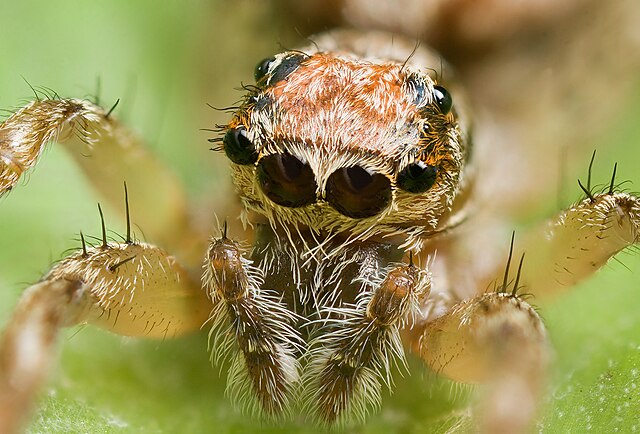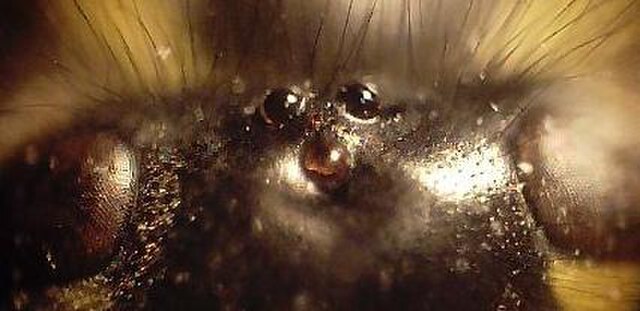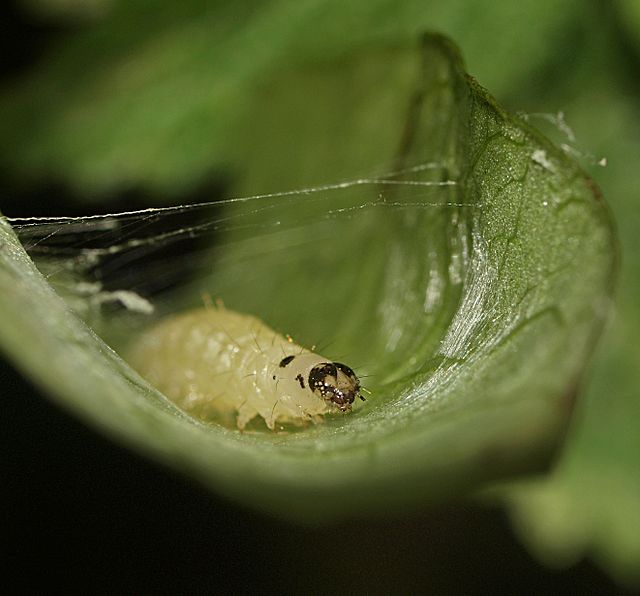Simple eye in invertebrates
A simple eye or ocellus refers to a form of eye or an optical arrangement composed of a single lens without an elaborate retina as occurs in most vertebrates. In this sense "simple eye" is distinct from a multi-lensed "compound eye", and is not necessarily at all simple in the usual sense of the word.
Head of Polistes with two compound eyes and three ocelli (circled)
This jumping spider's main ocelli (center pair) are very acute. The outer pair are "secondary eyes" and other pairs of secondary eyes are on the sides and top of its head.
Head of a wasp with three dorsal ocelli (centre), and the upper part of its compound eyes (left and right)
Moth larva about to moult; the new stemmata are visible behind the old head capsule
An eye is a sensory organ that allows an organism to perceive visual information. It detects light and converts it into electro-chemical impulses in neurons (neurones). It is part of an organism's visual system.
Compound eye of an Antarctic krill
Eye of a European bison
Human eye, a refractive cornea type eye.
The eyes of a mantis shrimp (here Odontodactylus scyllarus) are considered the most complex in the whole animal kingdom.








